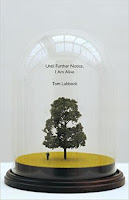I grew up in a
Protestant family. My brothers and I went to Sunday school, got confirmed, and
later married in the same Methodist Church on Pittsburgh’s Northside. Overall,
it was a good experience. But I always envied Catholic girls, especially in
May.
Our working
class neighborhood was a mixture of Protestant and Catholic families. Kids were
divided by schools: Spring Hill Public or Saint Ambrose Catholic. But it was a
close neighborhood and we all played together after school.
We were in and out
of each others houses often, and one mother could stand in for another when it
came to discipline or first aid. The differences were few but the Catholic
girls seemed to have something special.
It was in second
grade that my feelings of envy emerged. My Catholic friends were having their First
Holy Communion. My friends got to wear poofy white dresses and headbands with
flowers and little veils. They were given medals with pictures of saints,
rosaries and most intriguing, scapulars.
A scapular is two
small patches of cloth with holy pictures on them, connected by a loop of
string. My girl friends told me that it
protected them from evil and all manner of bad things, and it was a sin, they
told me, to take it off. The idea of a
passionate commitment to something, even a string with holy pictures, was very
appealing.
Catholicism
offered my friends other comforts. As a kid I would have liked a patron saint
or a guardian angel, but the Methodist church didn’t offer any of those. Instead
we were counseled, in an ecumenically respectful way, that all that stuff was
Catholic and kind of magical. Now, this was at the same age that I was
fascinated with writing in code, creating invisible ink, becoming a blood
sister, playing with the Ouija board and making up secret societies. I was made
myth and magic out of anything I could get my hands and mind around.
The best thing,
though, that Catholic girls got was Mary. She was presented as motherhood and
sweetness, but Catholic girls got a very clear message that there was a woman
in heaven, that somebody understood the female side of things.
For Protestant
girls, Mary shows up once a year-- at Christmas --to give birth. She might get dragged
out again on Good Friday—but only in the background. No role model, no
intercessor, no friend. My Catholic pals had statues of Mary. Some had the plastic
glow-in-the-dark kind, and the older girls had painted plaster Marys, dressed
in blue robes with big doe eyes like my Barbie. And Mary was always standing on
a snake. I certainly did not understand the symbolism, but I knew at ten that
this 12 inch woman had some power you could not buy for Barbie.
Best of all, my
friends had May altars. A May altar was basically a table with an old lace
tablecloth thrown over it. They put their Mary statues on it with flowers and
candles that they were allowed to light when they said their prayers. It still strikes me how feminine those altars
were. The Catholic girls had total permission to identify with the feminine in spiritual
matters. But no one gave little Protestant girls such romantic, mysterious
things to do or own.
This carried
over into all of a Catholic girl’s life. Mary got prayers, devotions,
pilgrimages and even architectural consideration: there is a Marian shrine in
every Catholic Church. Talk about having a room of one’s own. Mary’s presence
meant that the Catholic Church included at least one woman at a high level. In
her assumption into heaven, Mary had broken Christianity’s glass ceiling.
We pretty much
get the shape of our beliefs early on, and what Catholic girls got was a She
and a Her, someone like them, to pray to. And they got all those accessories:
medals, scapulars, rosaries, ruffled altar skirts and little white prayer
books. Protestant girls got black leatherette New Testaments, Jesus stories,
but nothing that said, “We’re glad you’re a girl.”
Of course,
later, Catholic girls ran into, the birth control problem and the brick wall
that said, “You can’t be a priest”. But what I saw my Catholic friends get was
faith in their girlhood and an image of feminine power. That’s not such a bad
way to start out.
 Turns out that is so not true, as completely unfair as that seems.
Turns out that is so not true, as completely unfair as that seems.

















